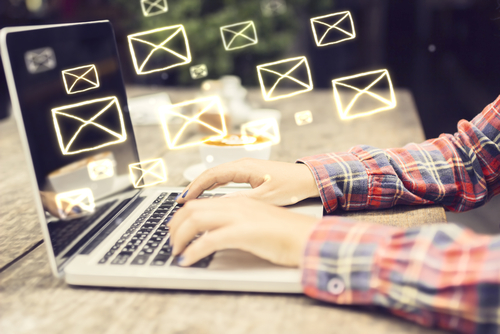Estimated reading time: 4 minutes
Email has been around for quite a while now; many of us may not even remember a time when email was not involved in daily workplace interactions. The rest can probably recall when email became a major part of their workday. Either way, email has become integral to how we communicate professionally. It is now much more powerful and rooted into our lives than ever before. However, much of the use of email today can be inhibitive or detrimental to the communication process; but there are ways to get better.
Over/Under
Most of us are going to fall into one of two categories: an under-communicator or an over-communicator. How often do you receive responses to your emails that are simply a list of questions seeking further explanation? It is possible that you are not providing sufficient information in your original email for the other party to understand what it is they are to do. Considering what it is you are asking and reviewing the email to make sure that enough information is being sent initially can prevent much of this. Full conversations are not what email is for, and sending multiple emails only slows down the process and frustrates the parties involved.
On the other hand, maybe you are providing so much detail that the recipient has no clue what question is even being asked of them. Detail overload can occur, and these lengthier emails packed with details and instructions can often be as hard to decipher as vague ones with little direction.
Whether you’re an under-communicator or an over-communicator, these methods of communicating are inefficient and can hurt your business, or your productivity.
Context then question
A great way to ensure communication is concise and easy to understand is to follow one simple order. Provide context first, then provide the question or needed action. Telling the recipient a short description of what you are working on first helps them understand the situation prior to being asked to do something. The use of bullet points instead of paragraphs can aid in the process as well. The last thing they should read in your email is the question or required action, to help make clear what is being asked of them.
Think smart (phone)
You may be sending that very important, very lengthy email from your desktop but consider that there is a high chance that some of the recipients will read it on a smartphone. Taking into consideration the method your recipients may be using to read your email is very important; screen size can make or break the readability of an email. This is even more important for organizations with a mobile workforce. Mobile workers will often fail to read the entirety of the email or may miss key points.
For this reason, writing a short summary of the email at the beginning with the key points highlighted will help ensure users of all devices understand the message. In addition, the subject line is often shortened on mobile devices. For this reason, keep your subject line short but very specific. Sorting email on the road is not as easy as sitting at a desk. More and more mobile workers are required to monitor email and respond in the same time frame as a stationary worker; for that reason senders need to ensure the message is as easy to read and understand regardless of the screen size.
The Thank You Email
Possibly one of the hardest things to write is the “thank you” email. There are times when it is important to send a thank you email for a multitude of reasons. From confirming information was received to thanking clients or coworkers for tasks completed to thanking attendees from an event, the “thank you” email is an integral part of communication. However, in many workplaces, the same co-workers email back and forth on a regular basis and these emails can become digital noise in the never-ending inbox of our day.
It can be more effective to handle those daily tasks by simply thanking your coworkers in advance. End your email with “thank you in advance for your help” as a way to be thankful and courteous, while eliminating the need for an additional email. Consider copying a supervisor on the email to ensure they are getting noticed for their continual and consistent responsiveness.
Email is not going anywhere but that does not mean it should rule your day or harm your ability to communicate effectively. Work hard to break free from the inbox. Write emails in a manner to helps reduce inbox clutter. Make sure to be concise with your words, and don’t shy away from simply picking up the phone when it appears that email communication has broken down.
Co-contributor: Joe Easton

